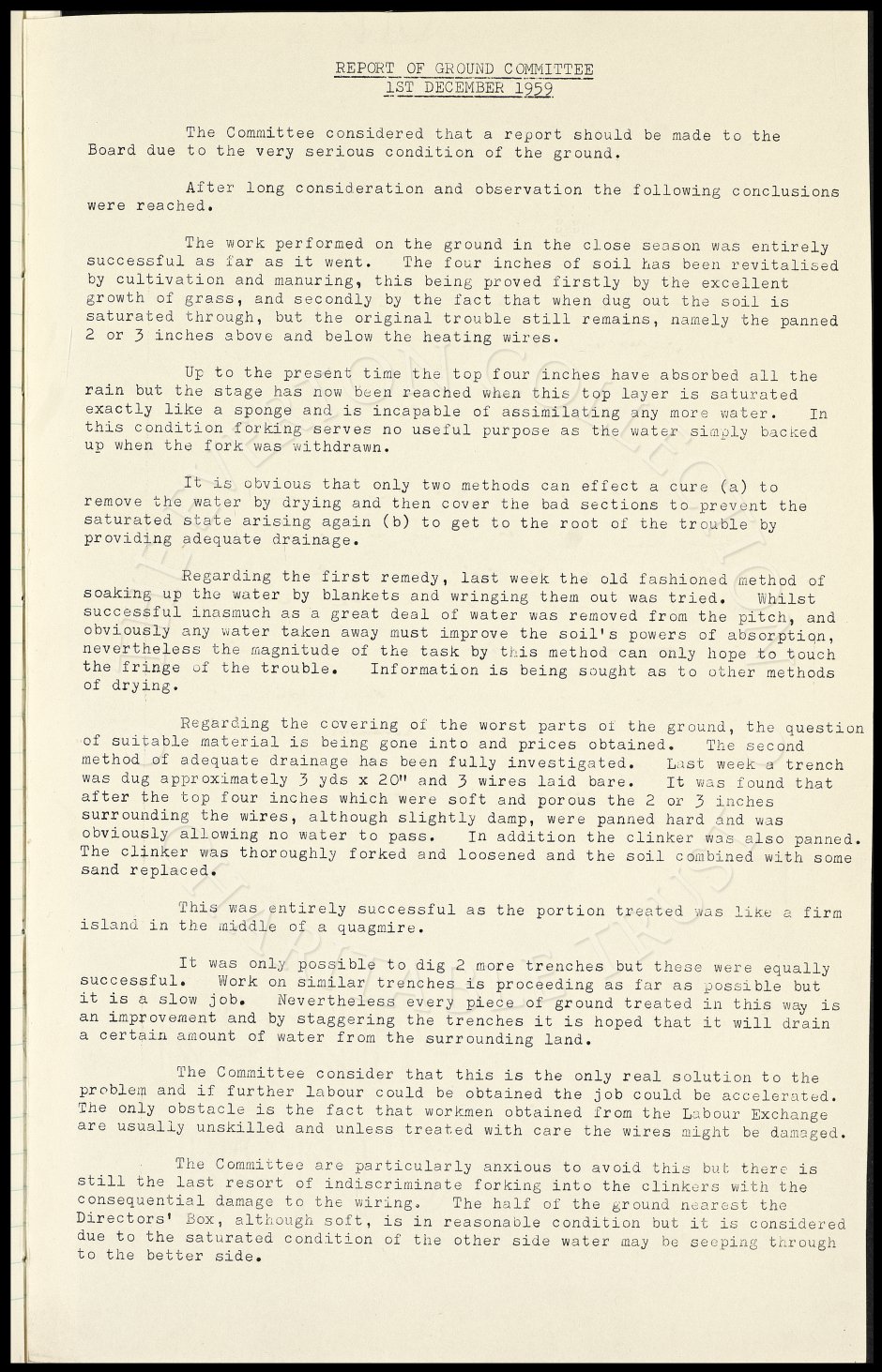
[REPORT OF GROUND COMMITTEE 1ST DECEMBER 1959] The Committee considered that a report should be made to the Board due to the very serious condition of the ground. After long consideration and observation the following conclusions were reached. The work performed on the ground in the close season was entirely successful as far as it went. The four inches of soil has been revitalised by cultivation and manuring, this being proved firstly by the excellent growth of grass, and secondly by the fact that when dug out the soil is saturated through, but the original trouble still remains, namely the panned 2 or 3 inches above and below the heating wires. Up to the present time the top four inches have absorbed all the rain but the stage has now been reached when this top layer is saturated exactly like a sponge and is incapable of assimilating any more water. In this condition forking serves no useful purpose as the water simply backed up when the fork was withdrawn. It is obvious that only two methods can effect a cure (a) to remove the water by drying and then cover the bad sections to prevent the saturated state arising again (b) to get to the root of the trouble by providing adequate drainage. Regarding the first remedy, last week the old fashioned method of soaking up the water by blankets and wringing them out was tried. Whilst successful inasmuch as a great deal of water was removed from the pitch, and obviously any water taken away must improve the soil's powers of absorption, nevertheless the magnitude of the task by this method can only hope to touch the fringe of the trouble. Information is being sought as to other methods of drying. Regarding the covering of the worst parts of the ground, the question of suitable material is being gone into and prices obtained. The second method of adequate drainage has been fully investigated. Last week a trench was dug approximately 3 yds x 20" and 3 wires laid bare. It was found that after the top four inches which were soft and porous the 2 or 3 inches surrounding the wires, although slightly damp, were panned hard and was obviously allowing no water to pass. In addition the clinker was also panned. The clinker was thoroughly forked and loosened and the soil combined with some sand replaced. This was entirely successful as the portion treated was like a firm island in the middle of a quagmire. It was only possible to dig 2 more trenches but these were equally successful. Work on similar trenches is proceeding as far as possible but it is a slow job. Nevertheless every piece of ground treated in this way is an improvement and by staggering the trenches it is hoped that it will drain a certain amount of water from the surrounding land. The Committee consider that this is the only real solution to the problem and if further labour could be obtained the job could be accelerated. The only obstacle is the fact that workmen obtained from the Labour Exchange are usually unskilled and unless treated with care the wires might be damaged. The Committee are particularly anxious to avoid this but there is still the last resort of indiscriminate forking into the clinkers with the consequential damage to the wiring. The half of the ground nearest the Directors' Box, although soft, is in reasonable condition but it is considered due to the saturated condition of the other side water may be seeping through to the better side.
